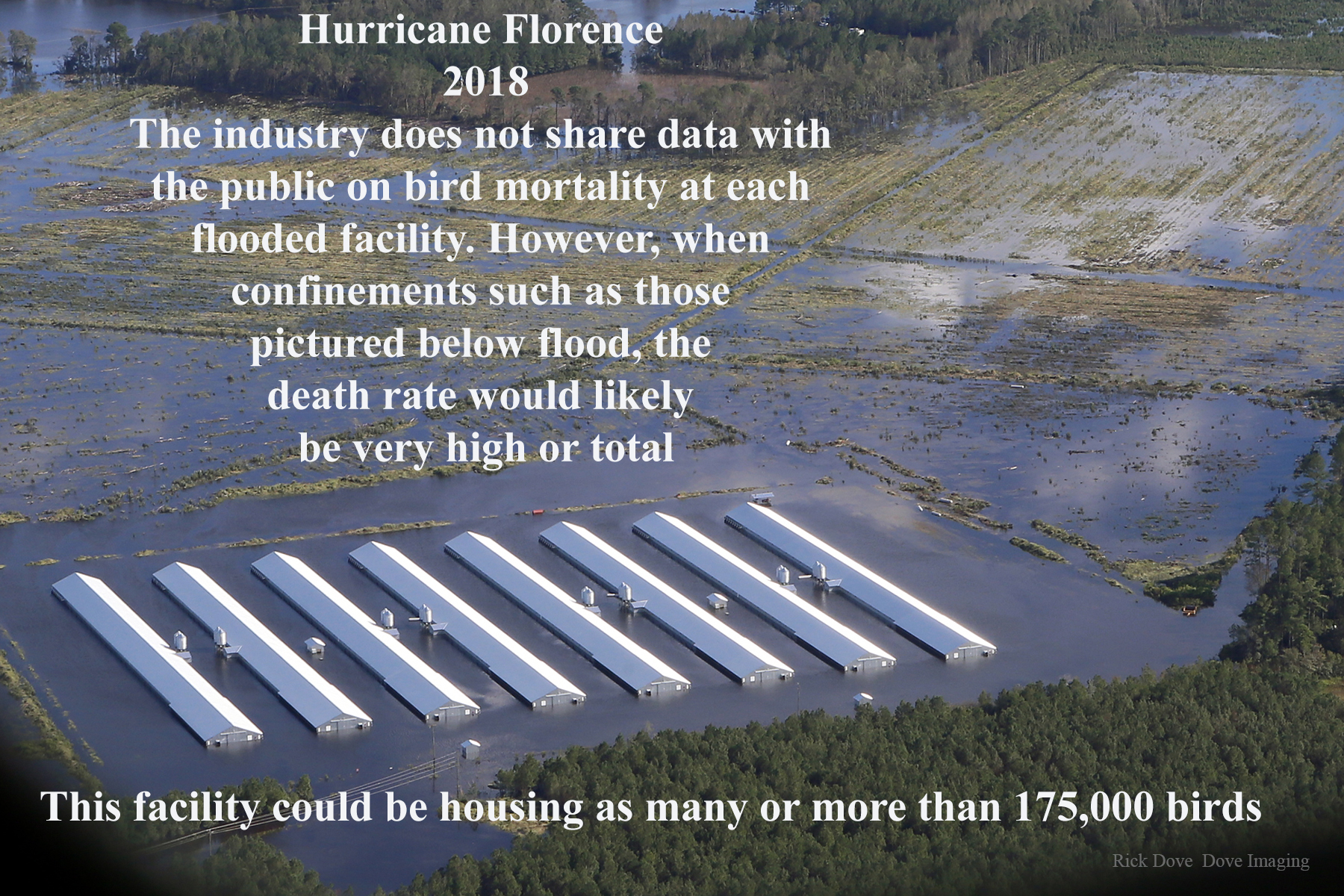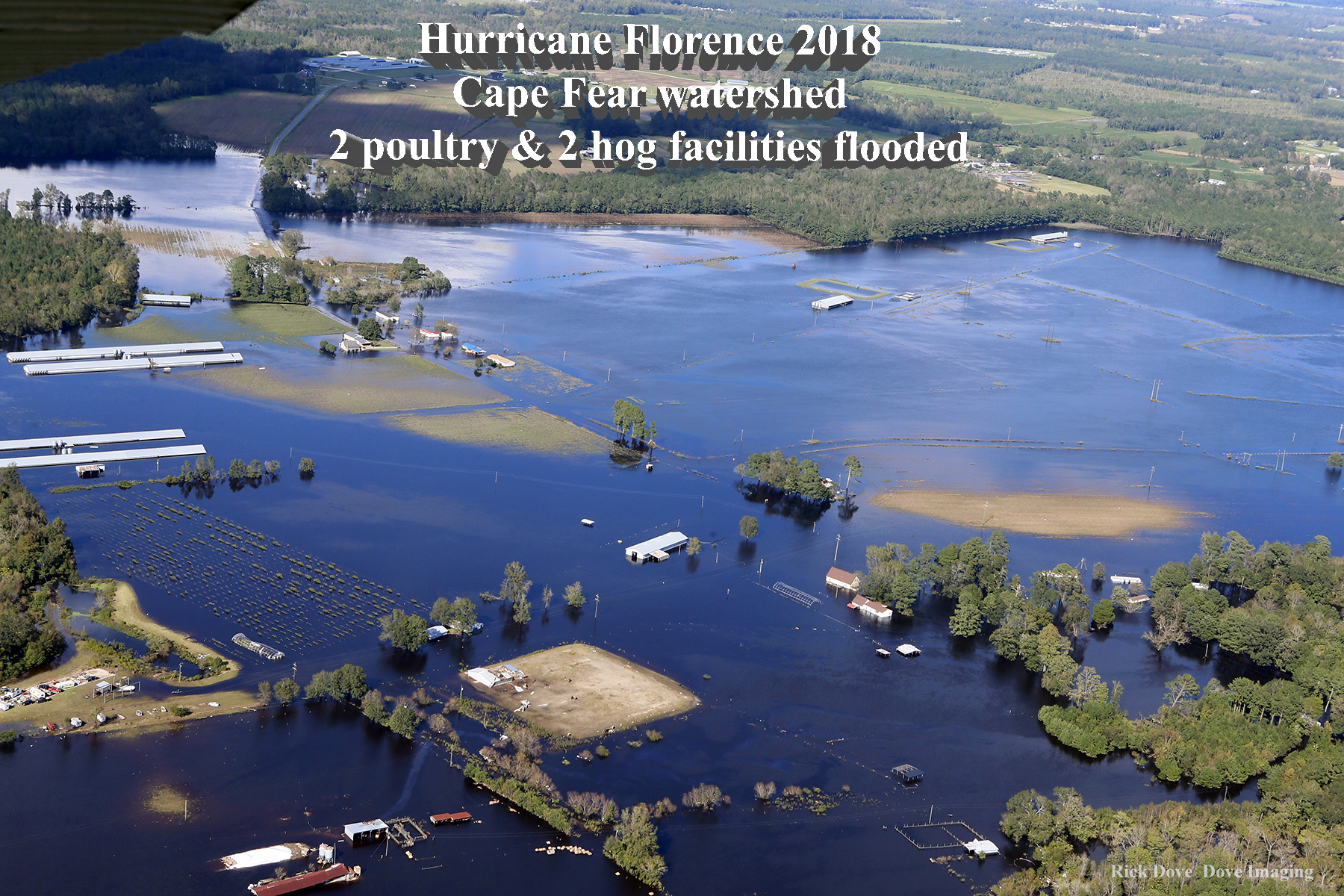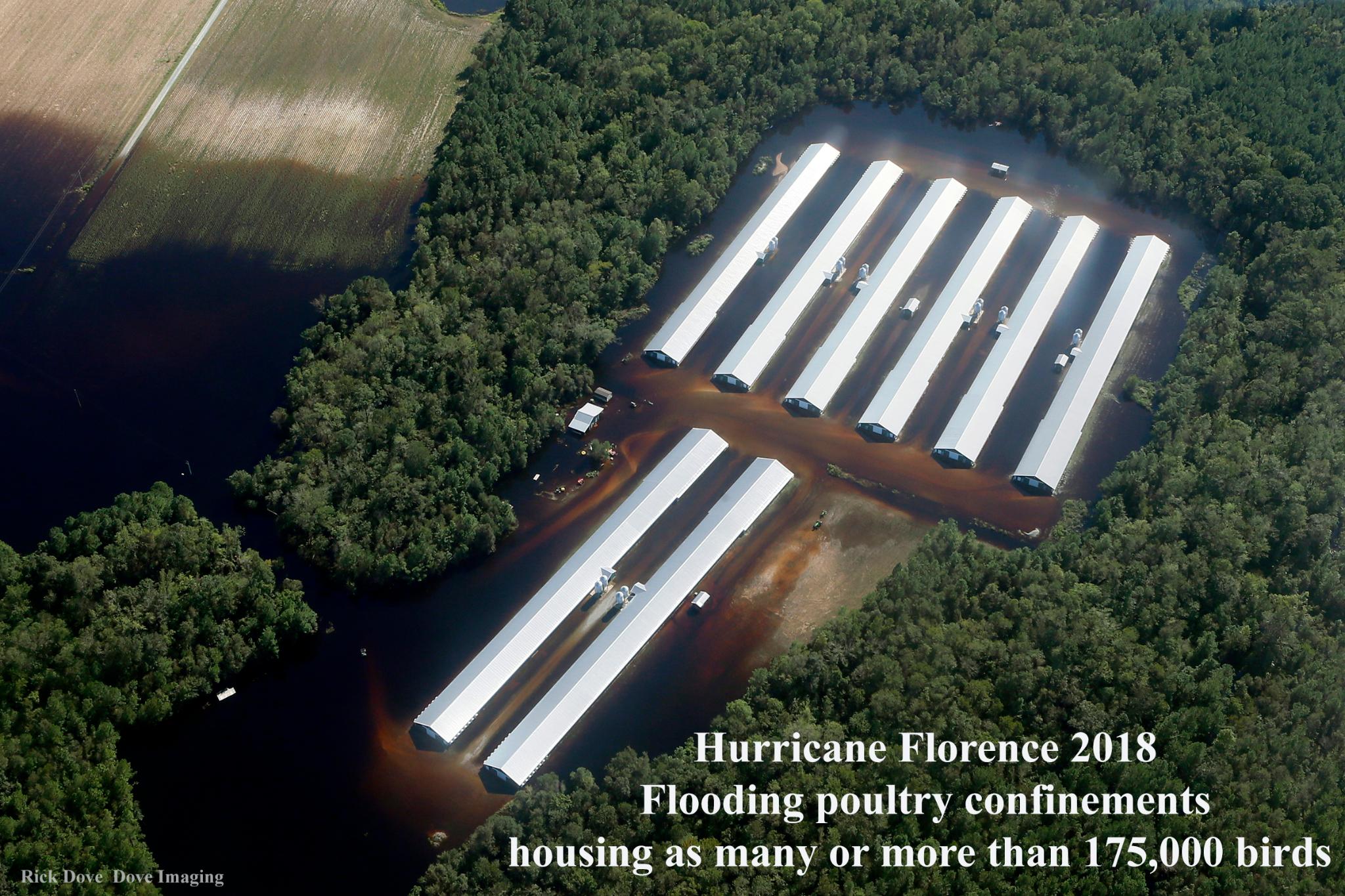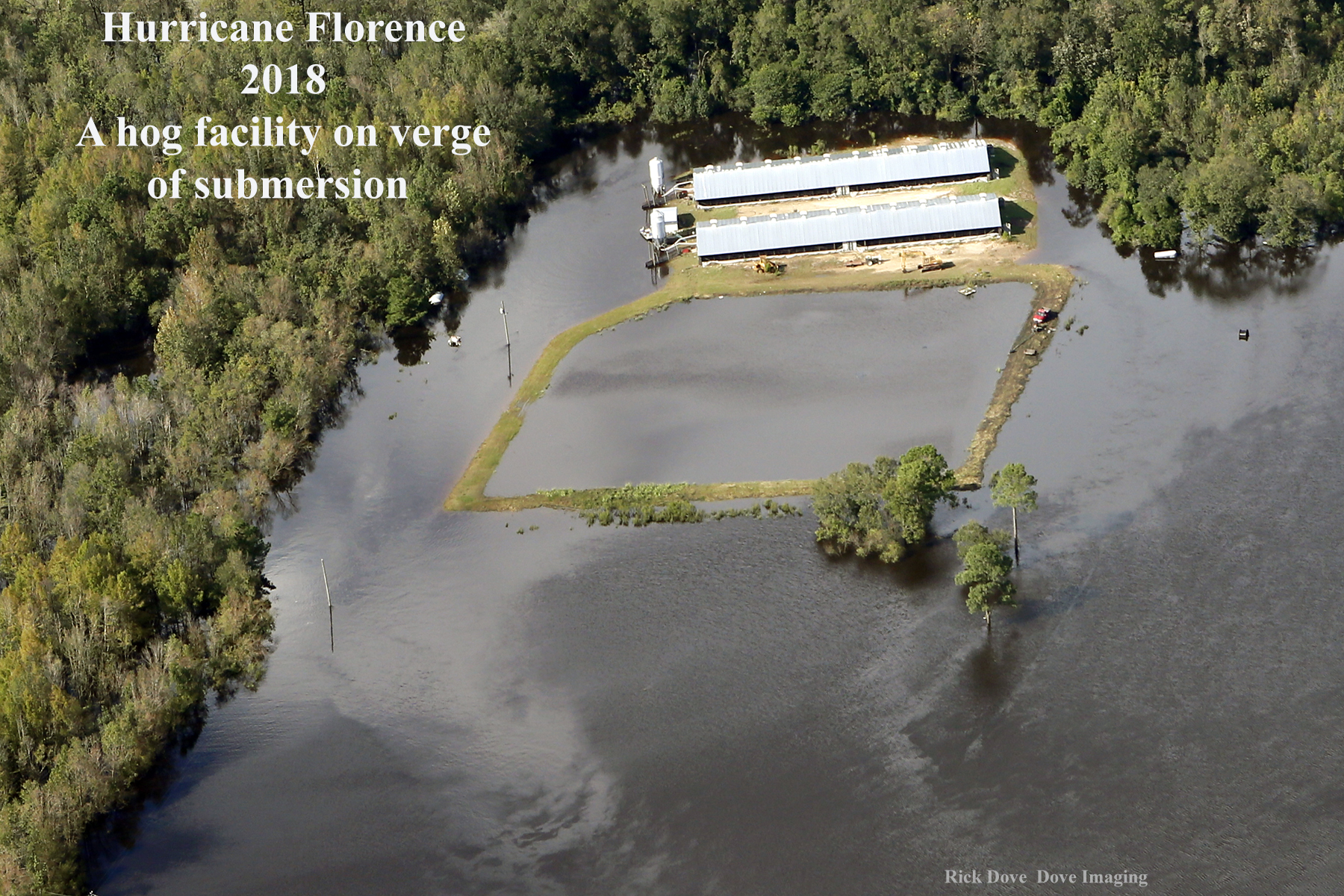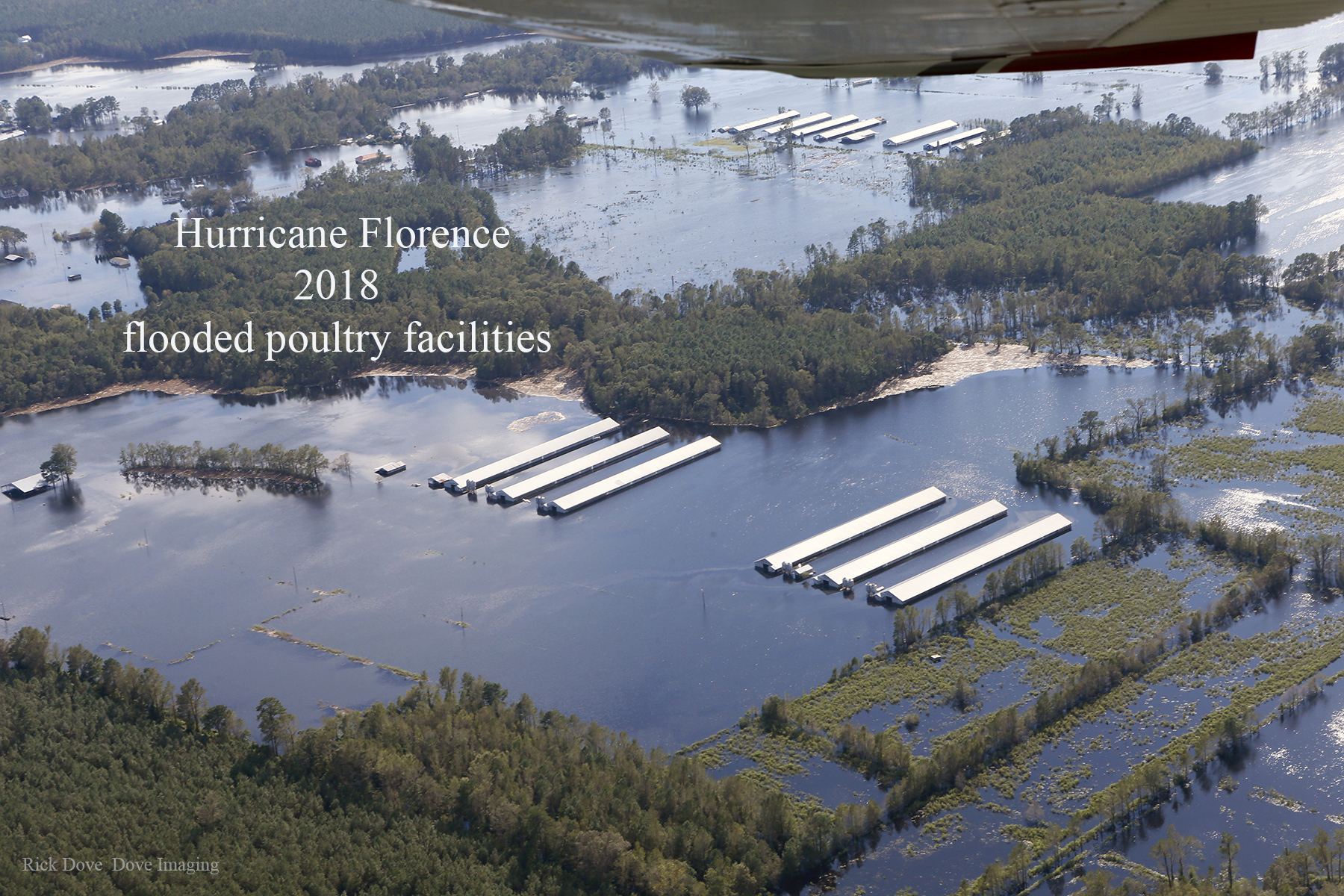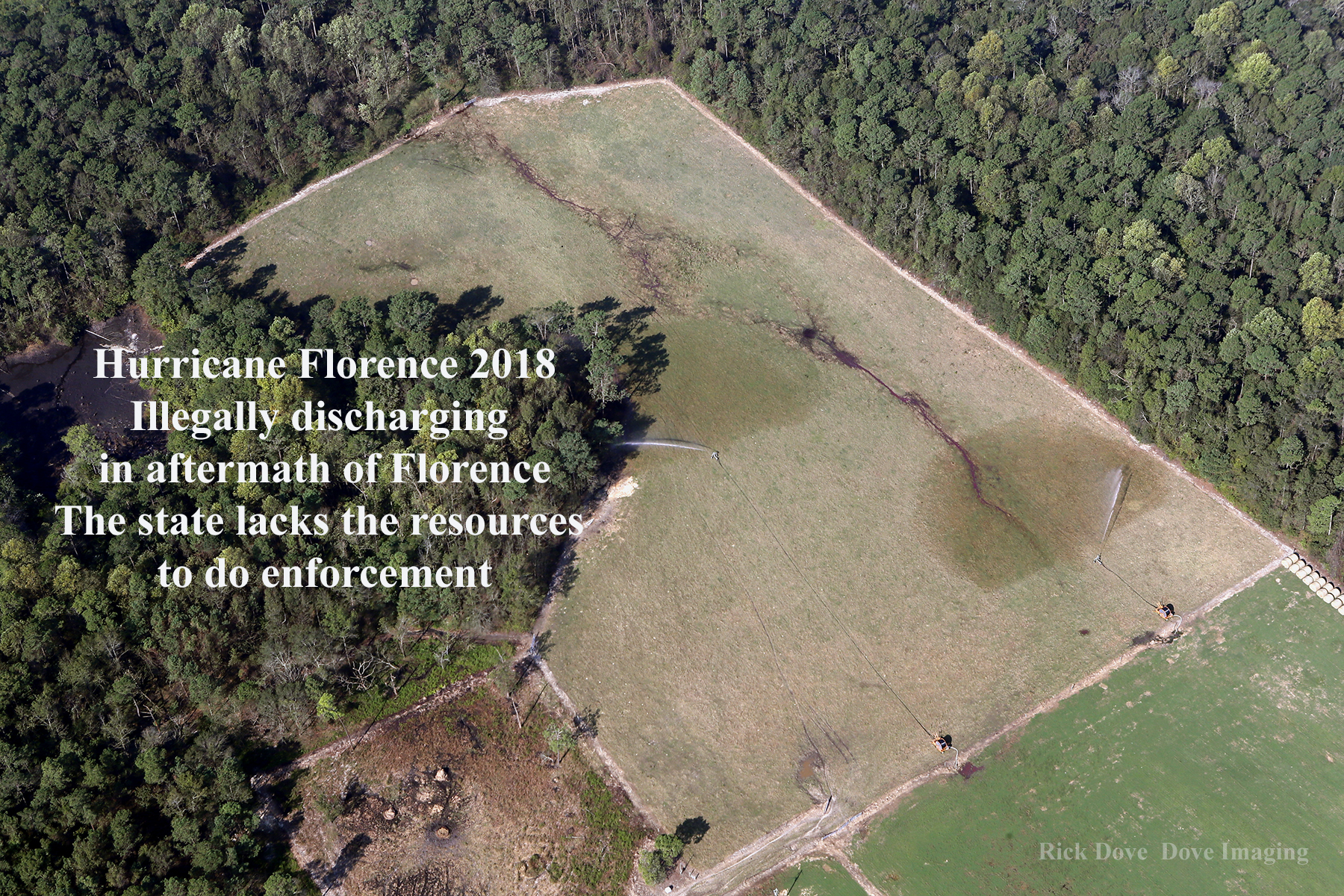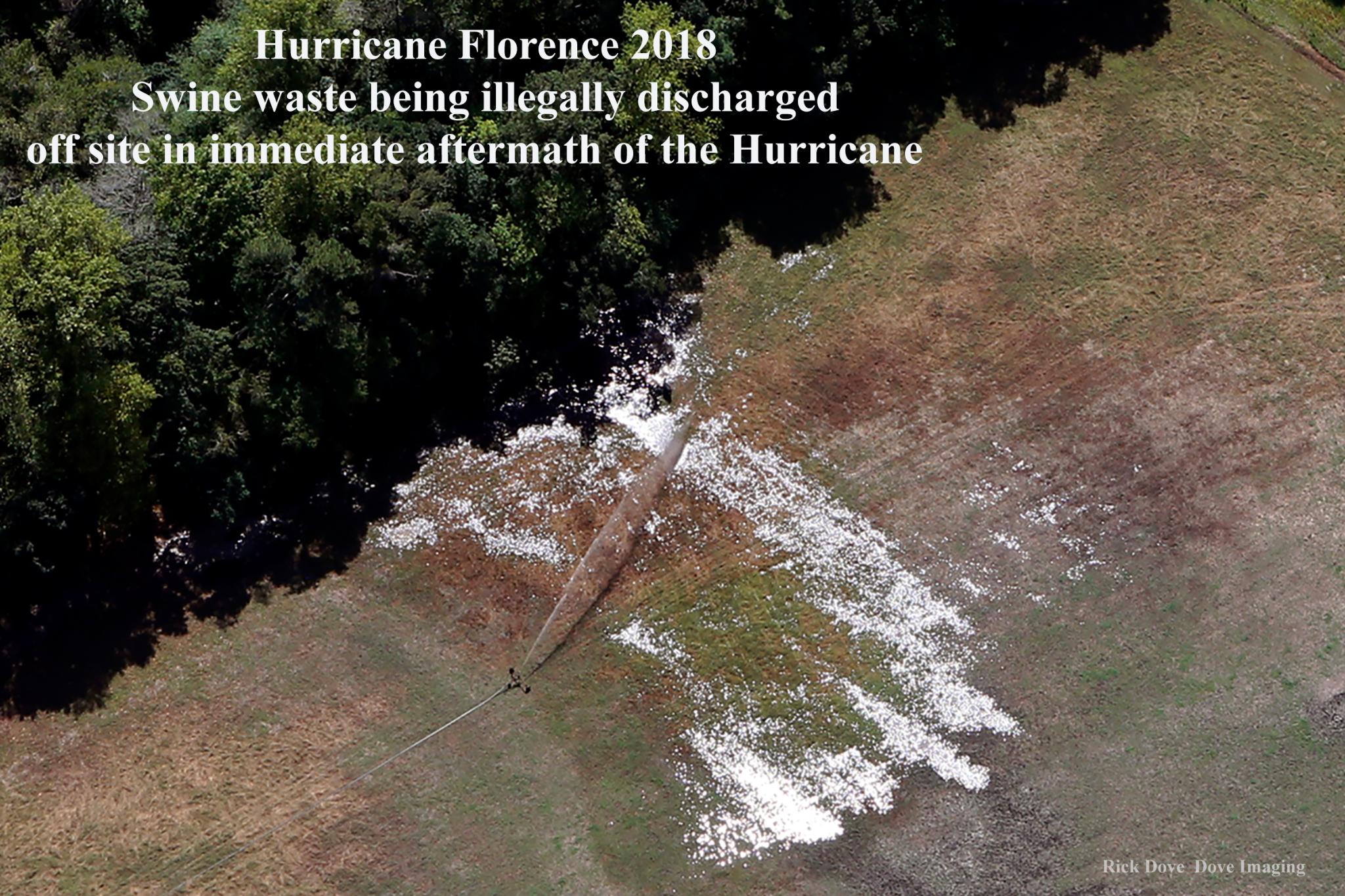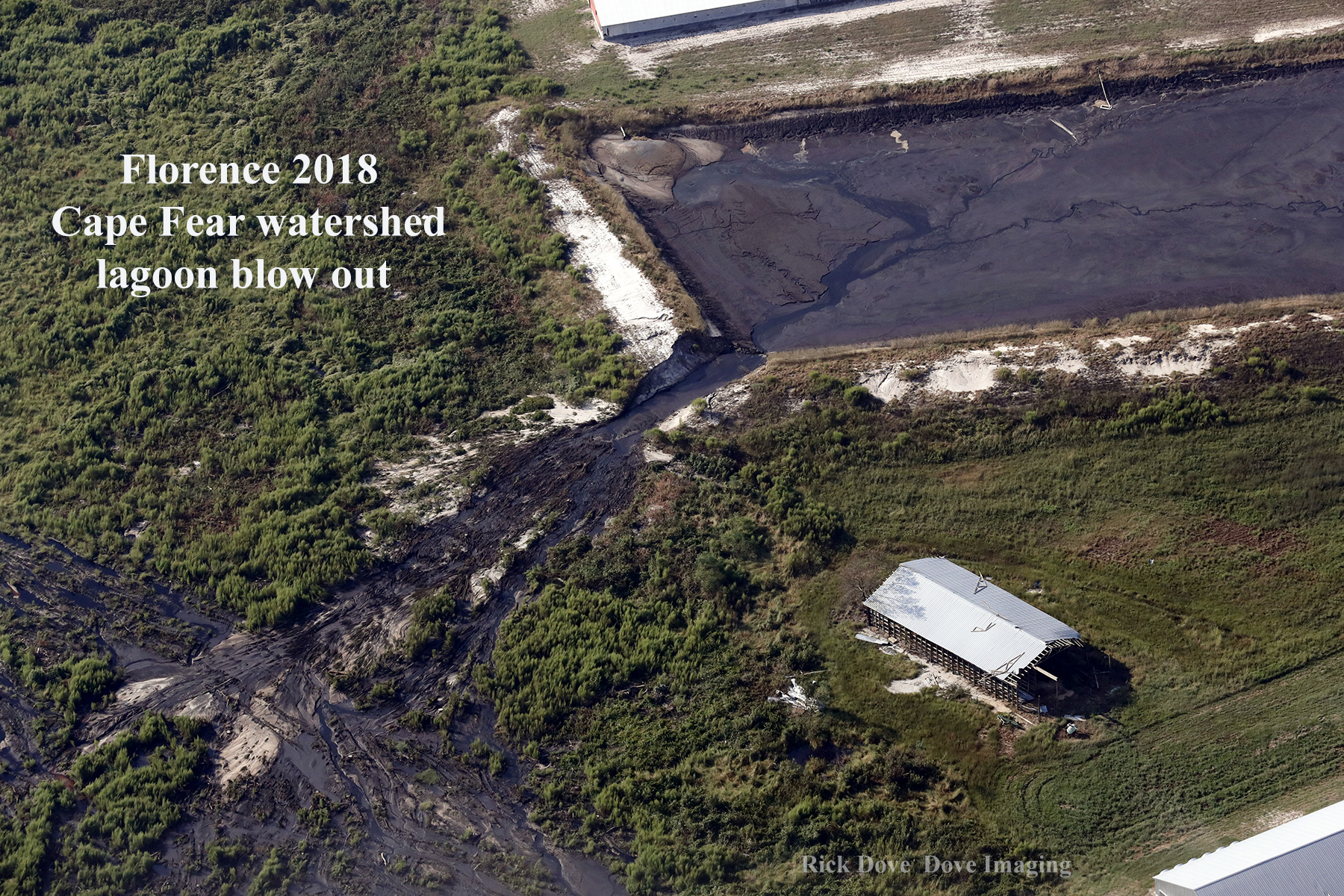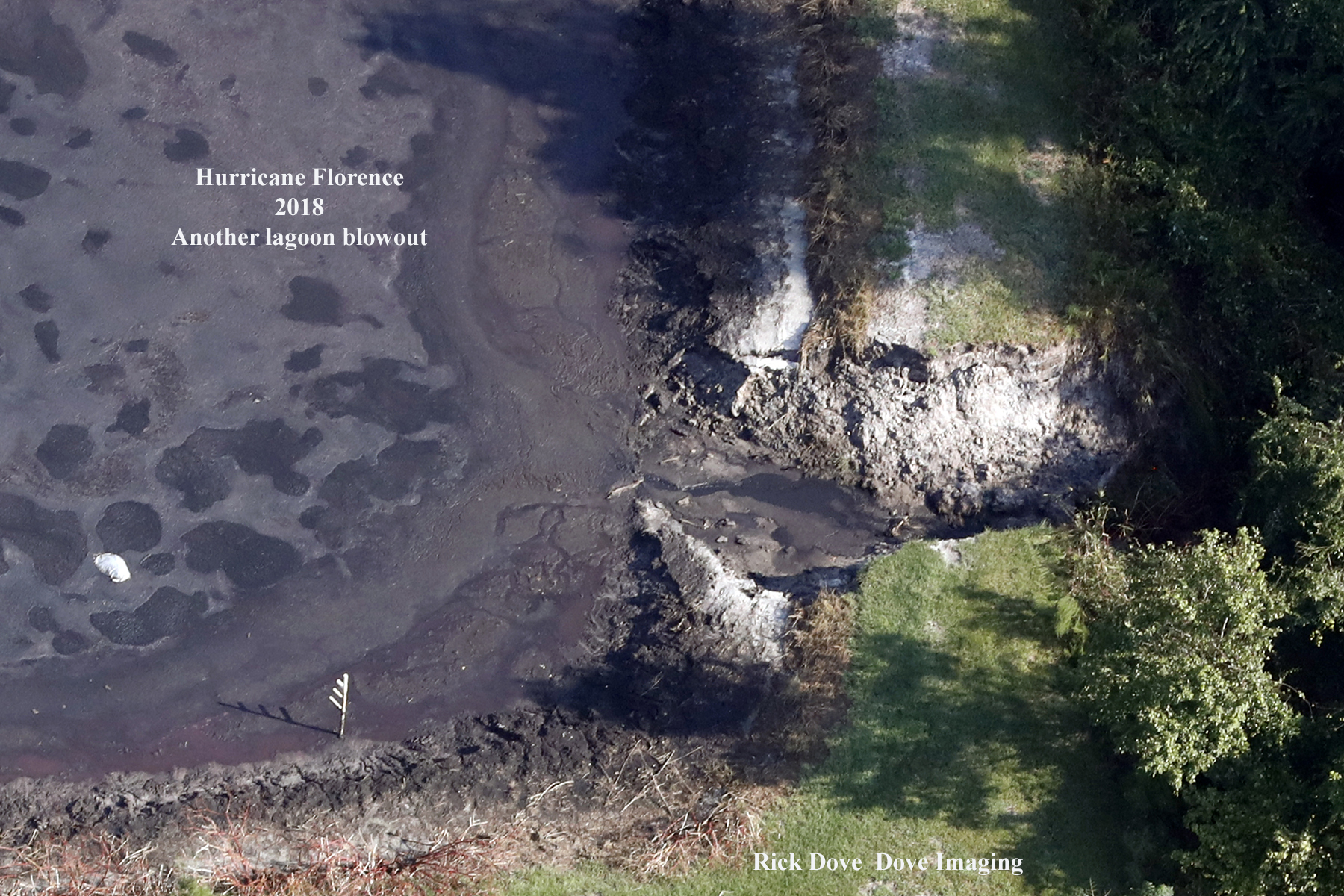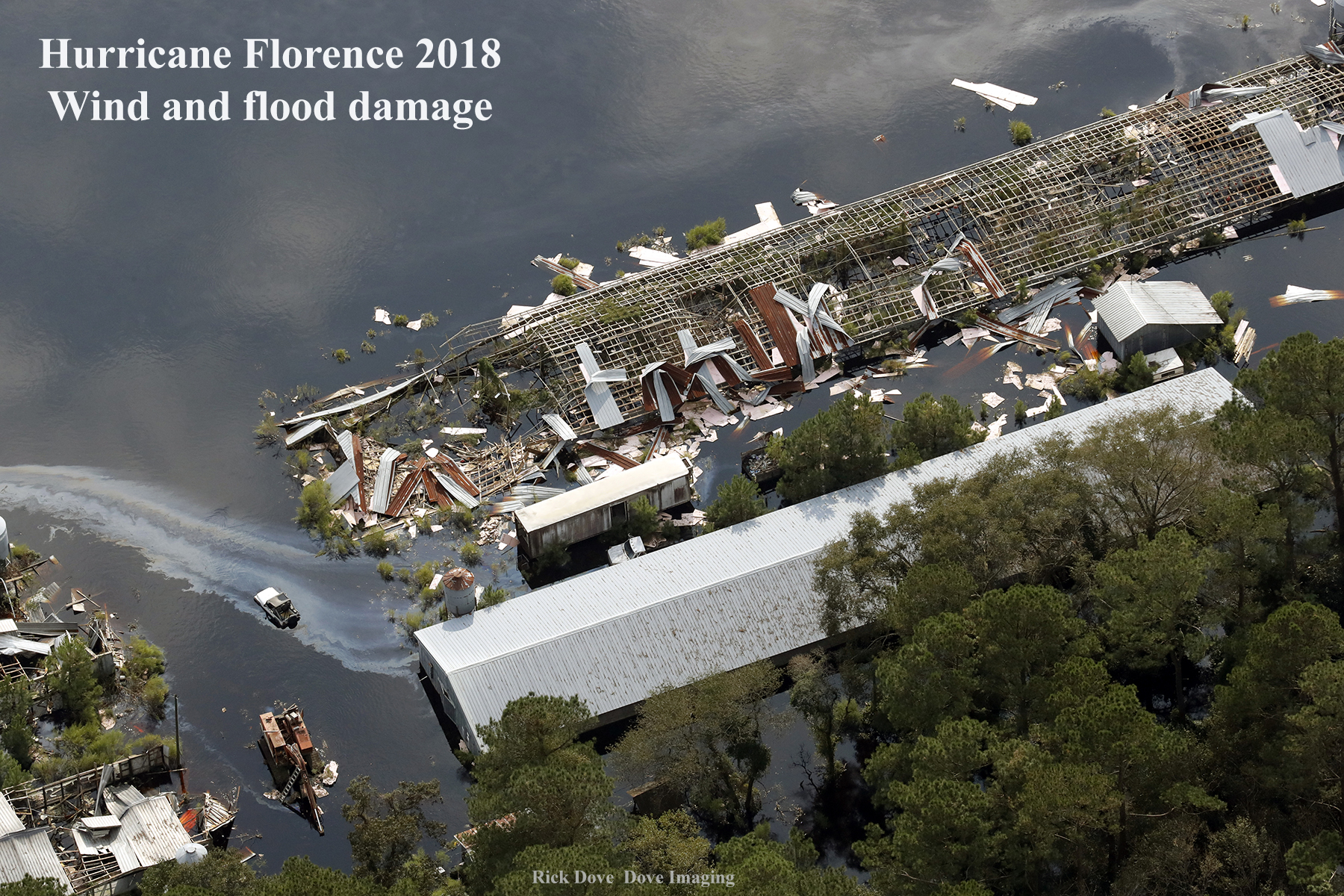HURRICANE ALLEY
The hog and poultry industries have developed substantially in eastern North Carolina. This area is located east of where Interstate 95 divides the state. It is a coastal plain--a flat land full of wetlands, streams, creeks and rivers. It has a very high water table and sandy soil. Under most conditions, it would be too wet to farm without being heavily ditched to lower the water table. Many, if not most of the farms also use drain tiles, buried a few feet beneath the ground to rapidly drain water from the fields. These underground pipes connect to ditches that drain to those wetlands, streams, creeks and rivers. As a development choice for Concentrated Animal Feeding Operations, or so-called industrial farms (CAFOs) is concerned, it is the worst possible location. It is extremely concerning that this area now contains the highest concentration of animal factories in the United States, and possibly, the world.
The location of these factory animal production facilities is also undesirable due to the strong tropical storm conditions that frequent North Carolina. Eastern North Carolina is known as Hurricane Alley. Its location is in the path of most of the storms that travel up the coast. When these storms hit, they bring strong winds and heavy rains. Buildings often suffer serious wind damage. Far more problematic are the heavy rains that cause serious flooding. In the aftermath of these storms, confinement buildings containing thousands of chickens, turkeys and hogs flood, some to their roof tops. The birds kept inside perish under these conditions. So do many of the hogs. Horrific environmental damage occurs when swine and poultry feces and urine get flushed out of the confinement buildings and the massive lagoons (cesspools) that are in harm's way.
What is truly insane regarding this whole process is that the state continues to allow most all of these "animal factories" to remain in harm's way storm after storm, expecting a different result. This will become clear to everyone viewing the below pictures of just three of the many different hurricanes that have hit North Carolina in the past 20 years.
Here is how the state and industry address the issue immediately after each storm: First, they suggest that the flooded facilities will not be reopened. Then, as time passes and the public attention span wanes, the animals are restocked and everything reverts back to the way it was before the storm.
It is a horrific problem when tropical storms hit eastern North Carolina, regardless of their intensity. There is always a degree of impact as shown below in the three featured hurricanes. The more intense the storm, the more intense are its impacts. Here is a link to an OPED published in the Washington Post that thoroughly describes the devastating impacts of animal factories during hurricanes.
FLOYD
September 1999

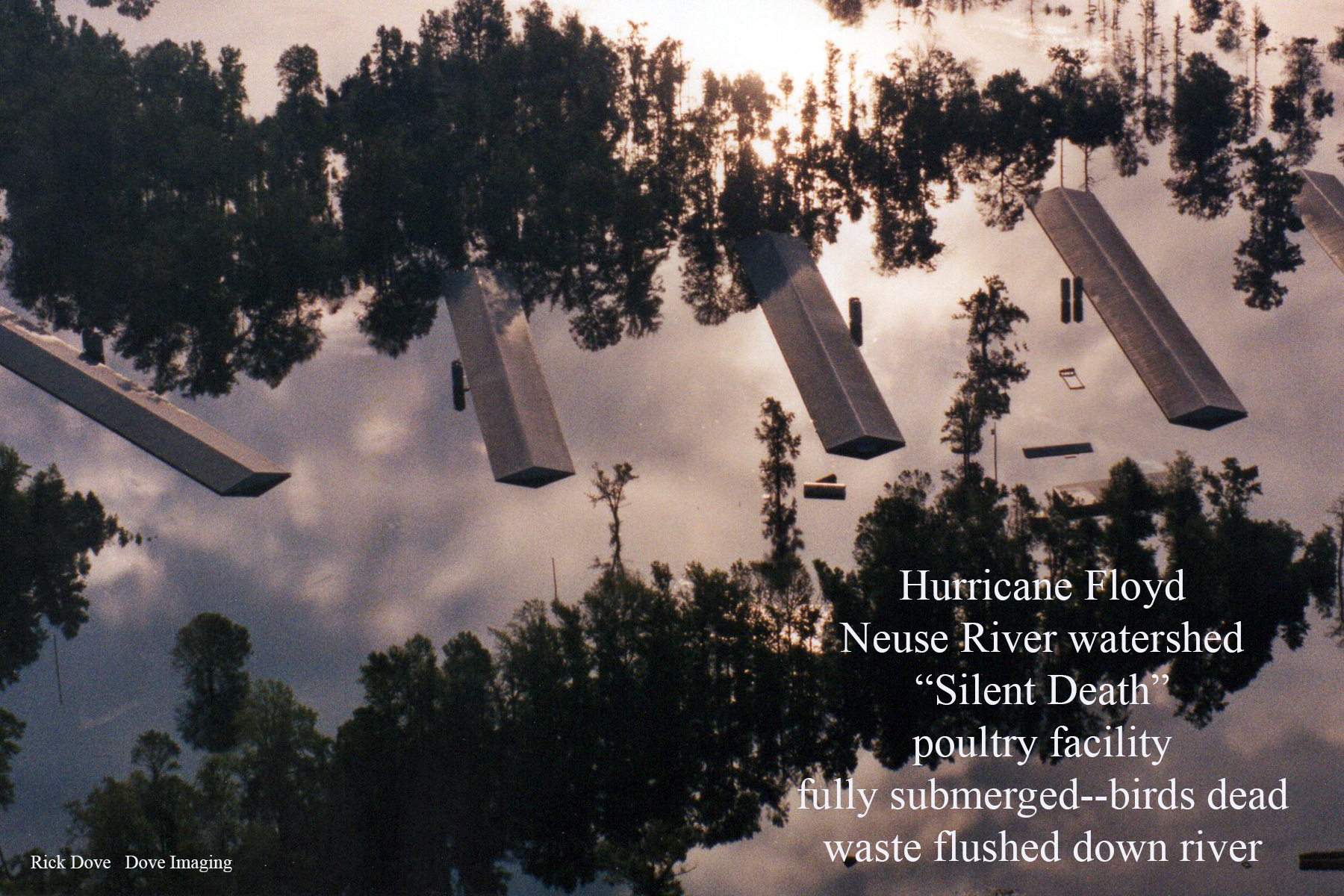
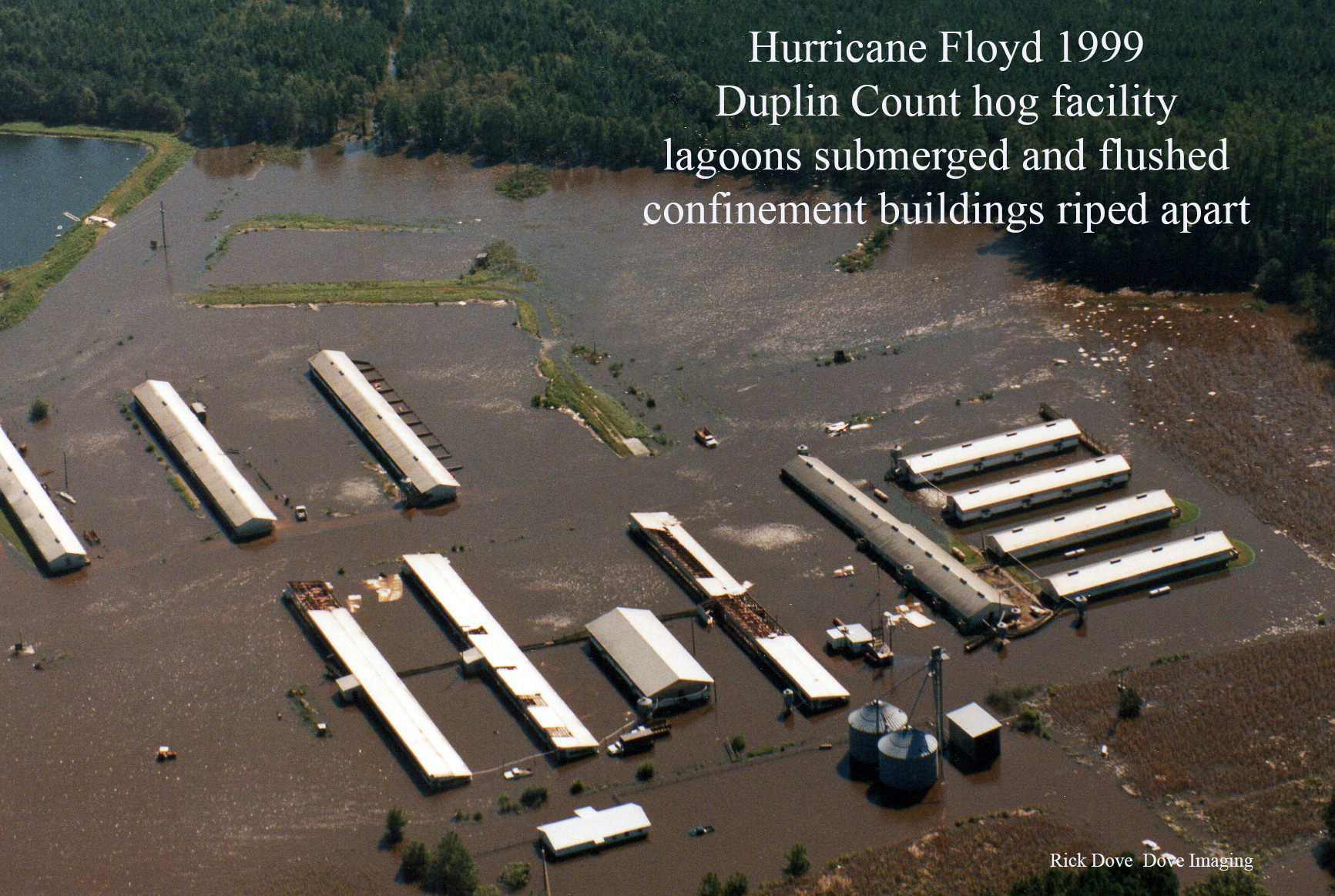
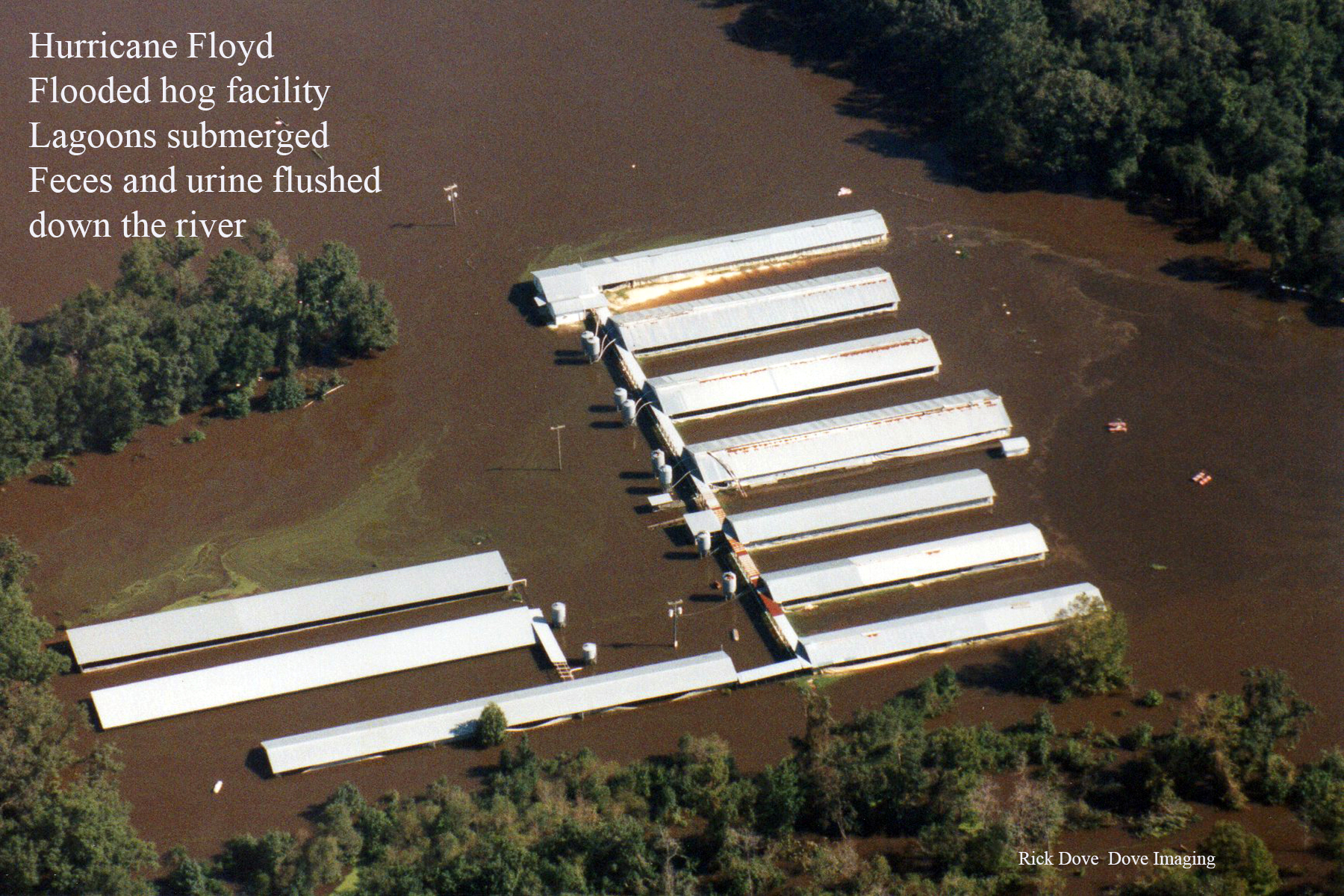

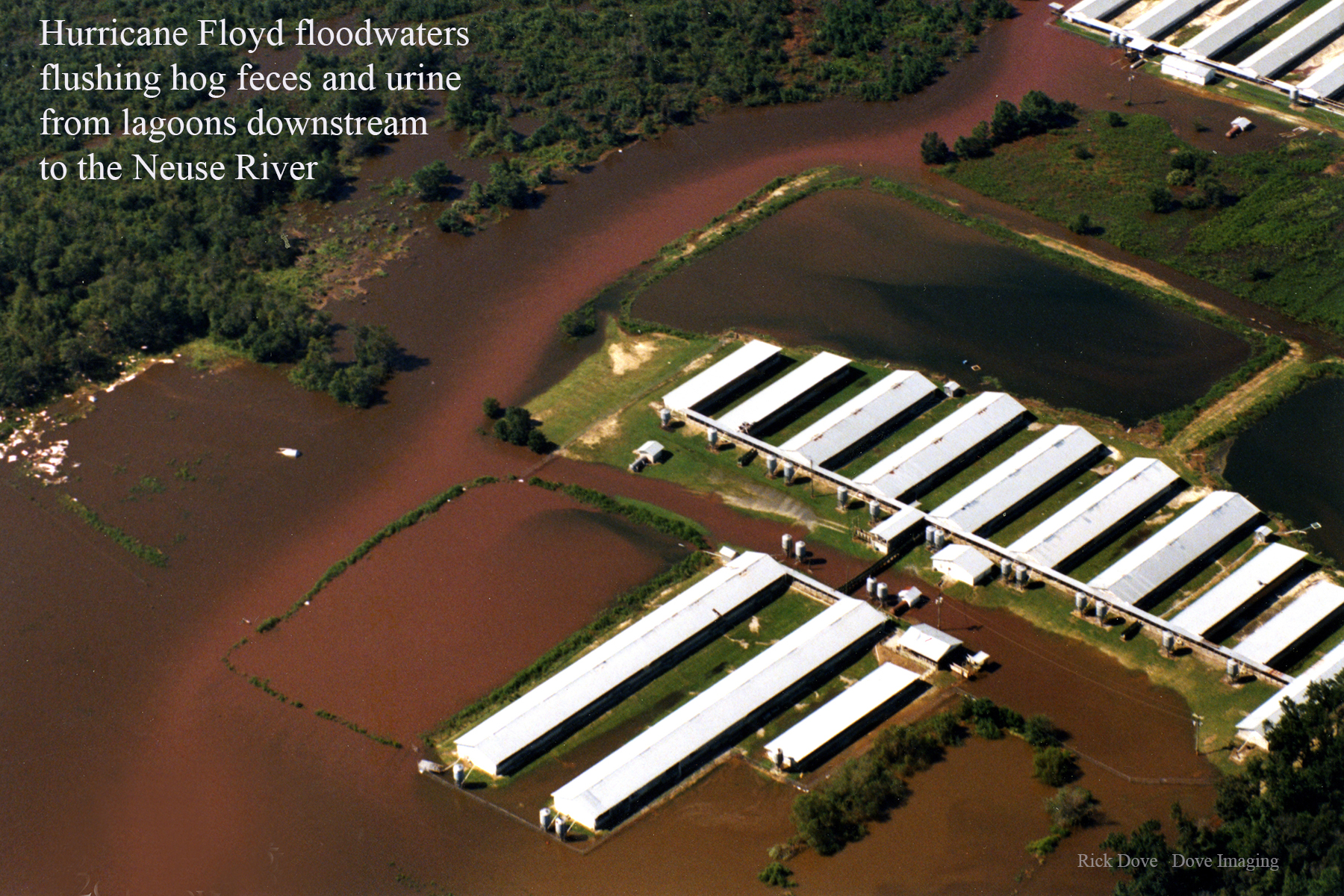
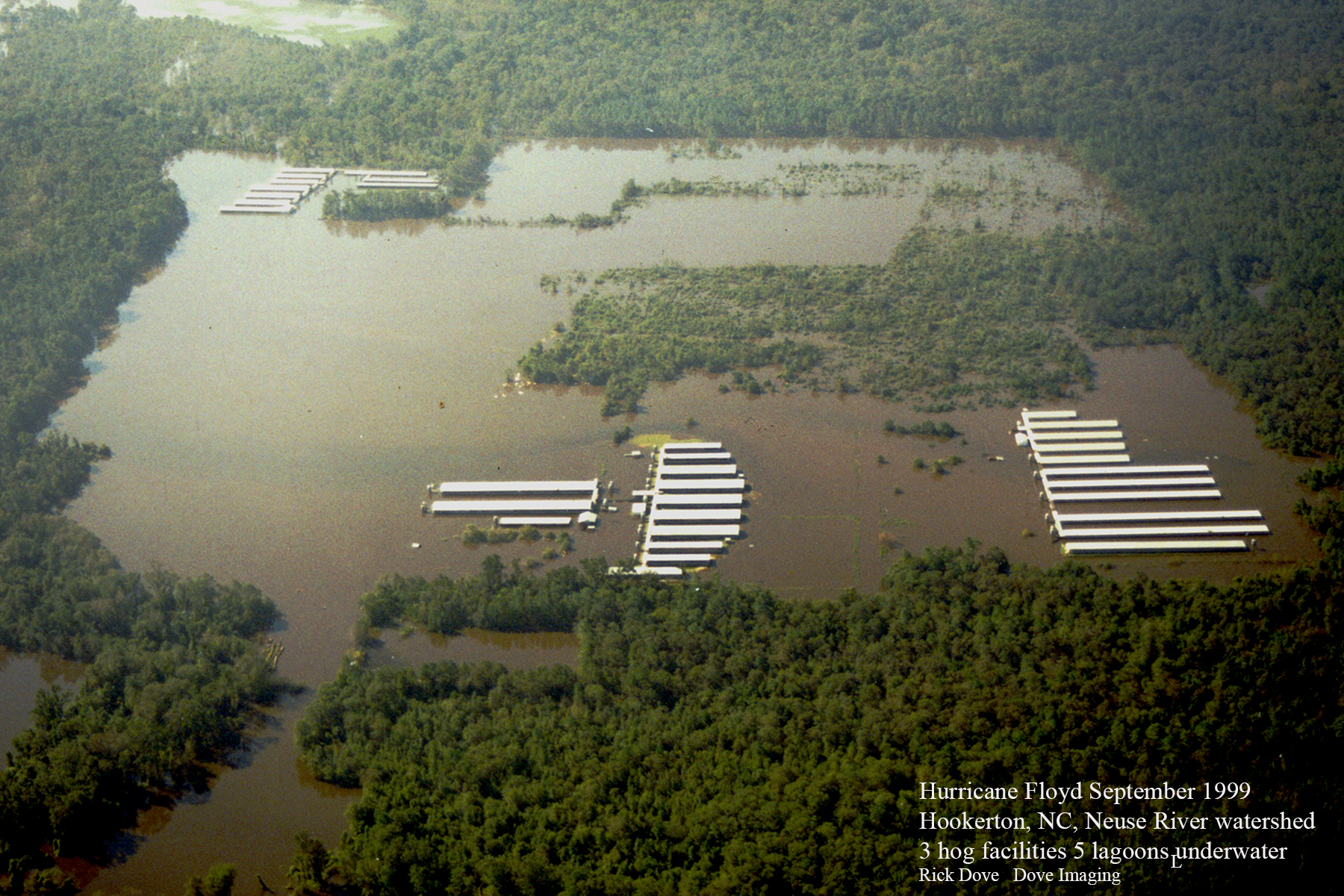
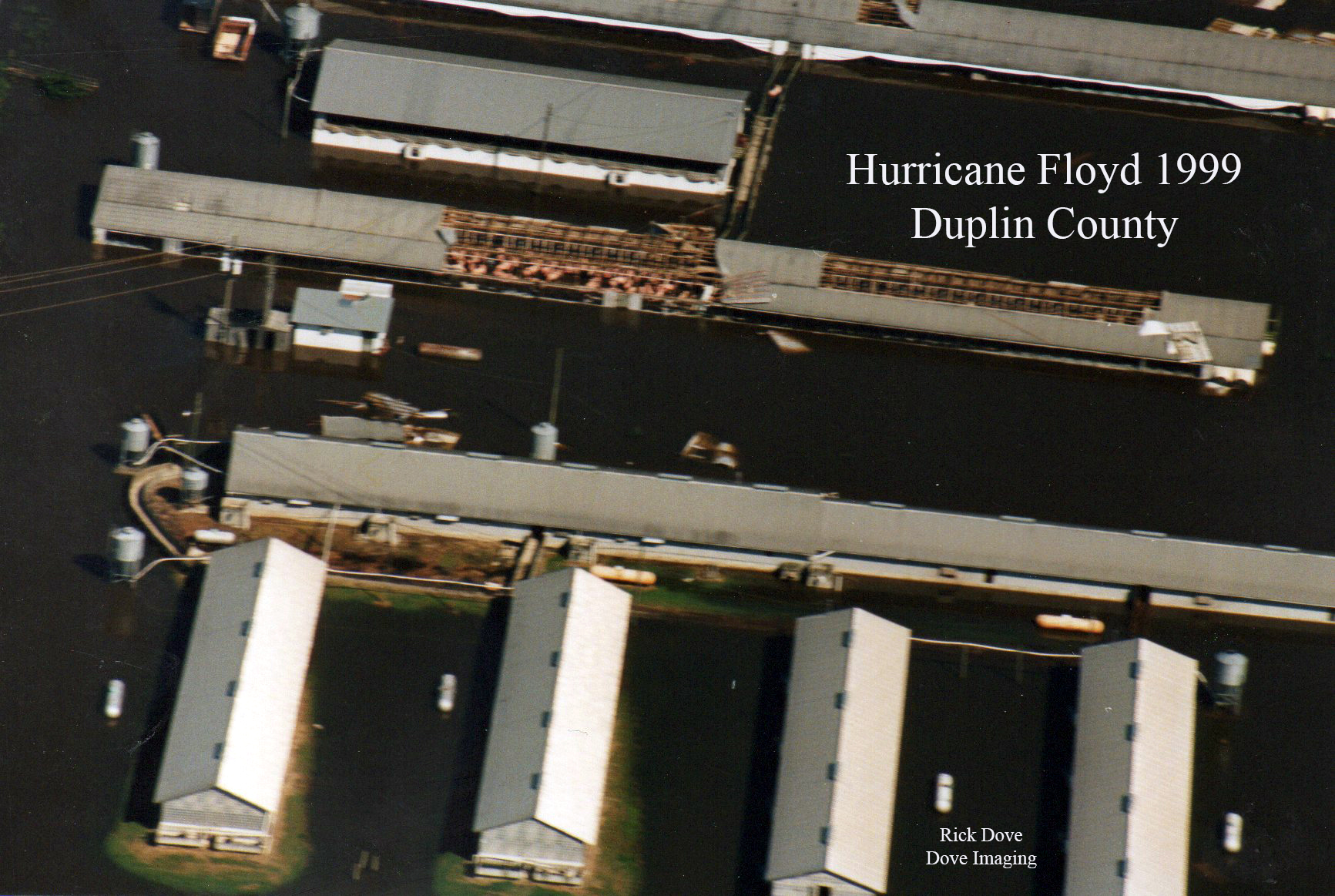
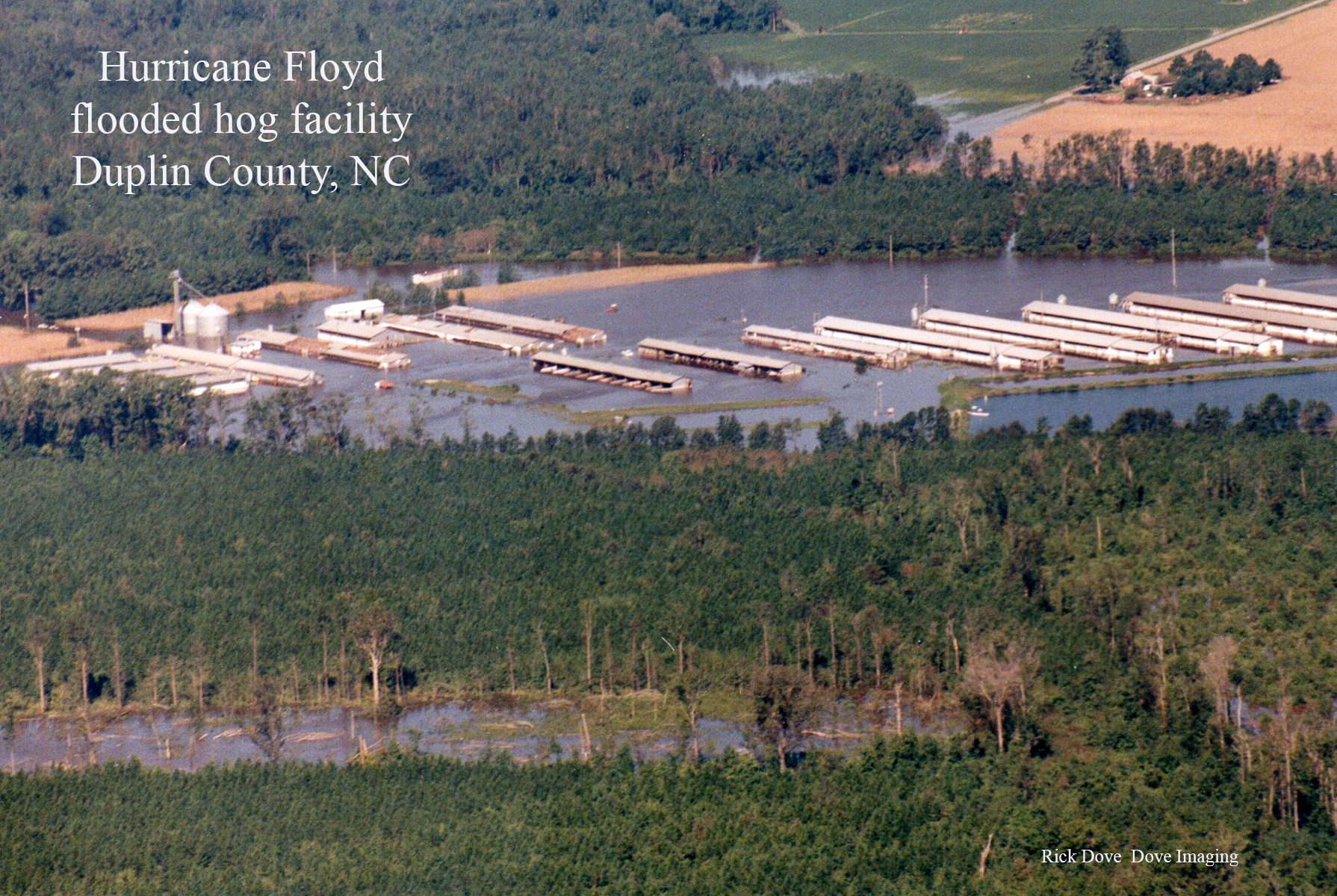








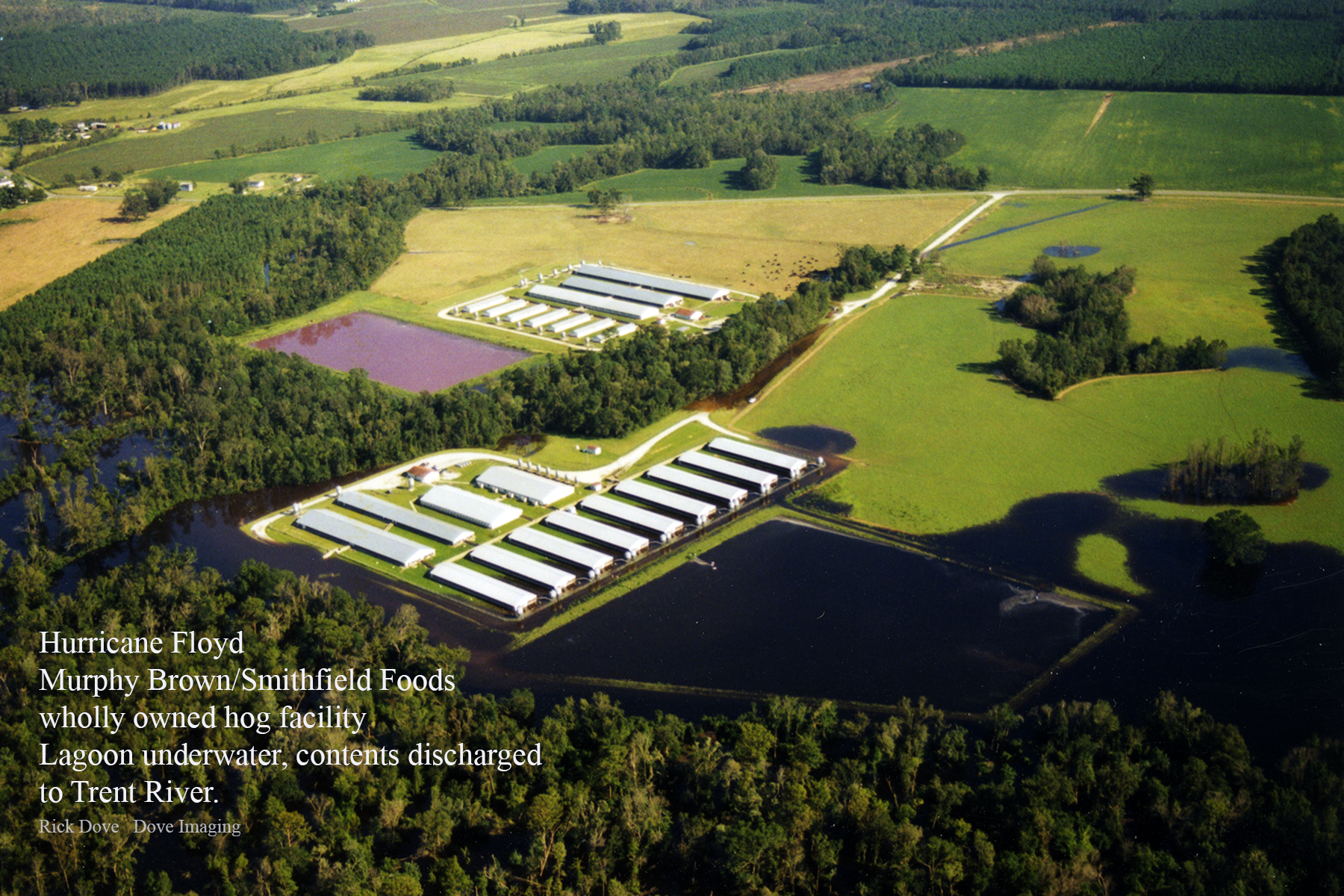
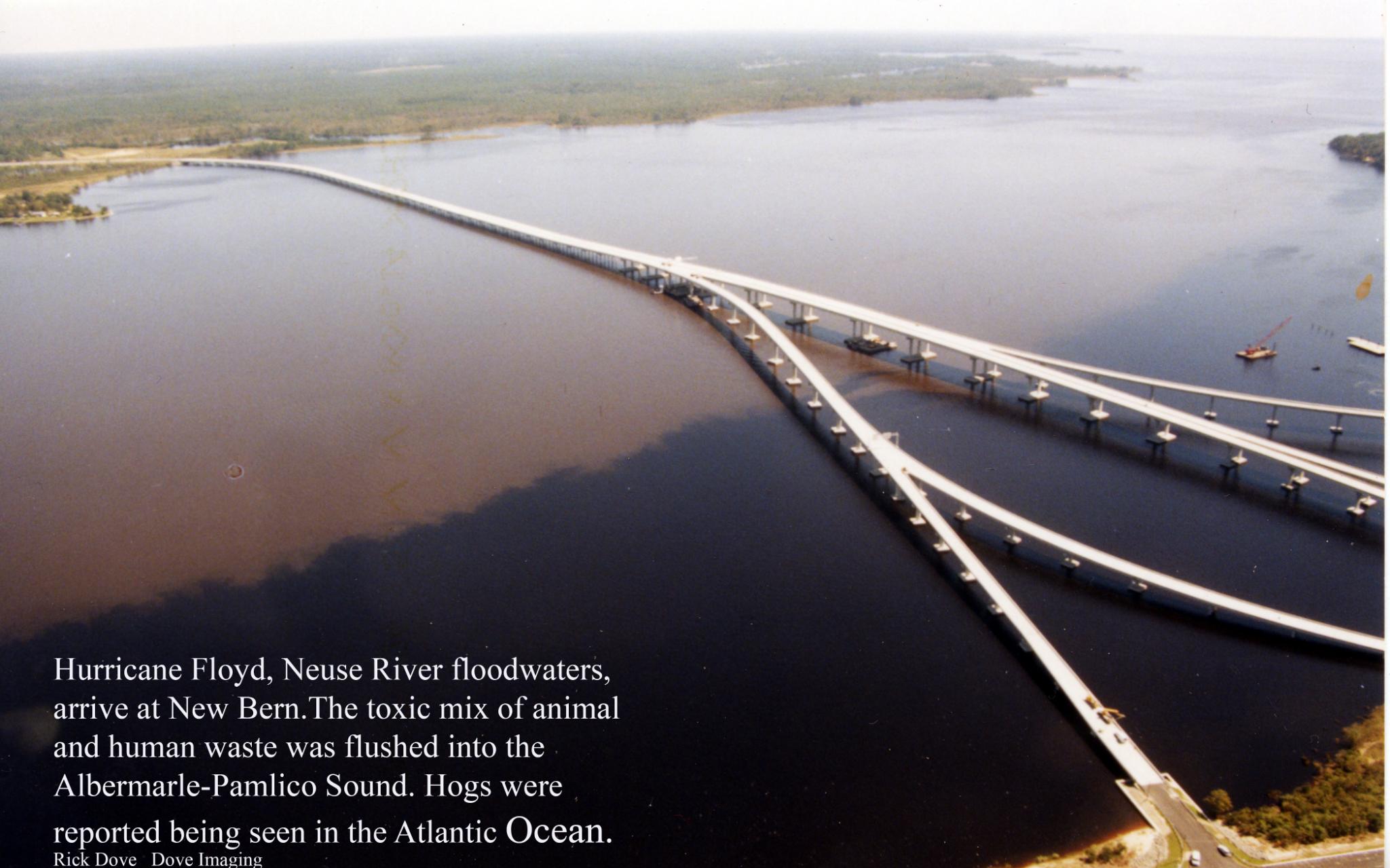
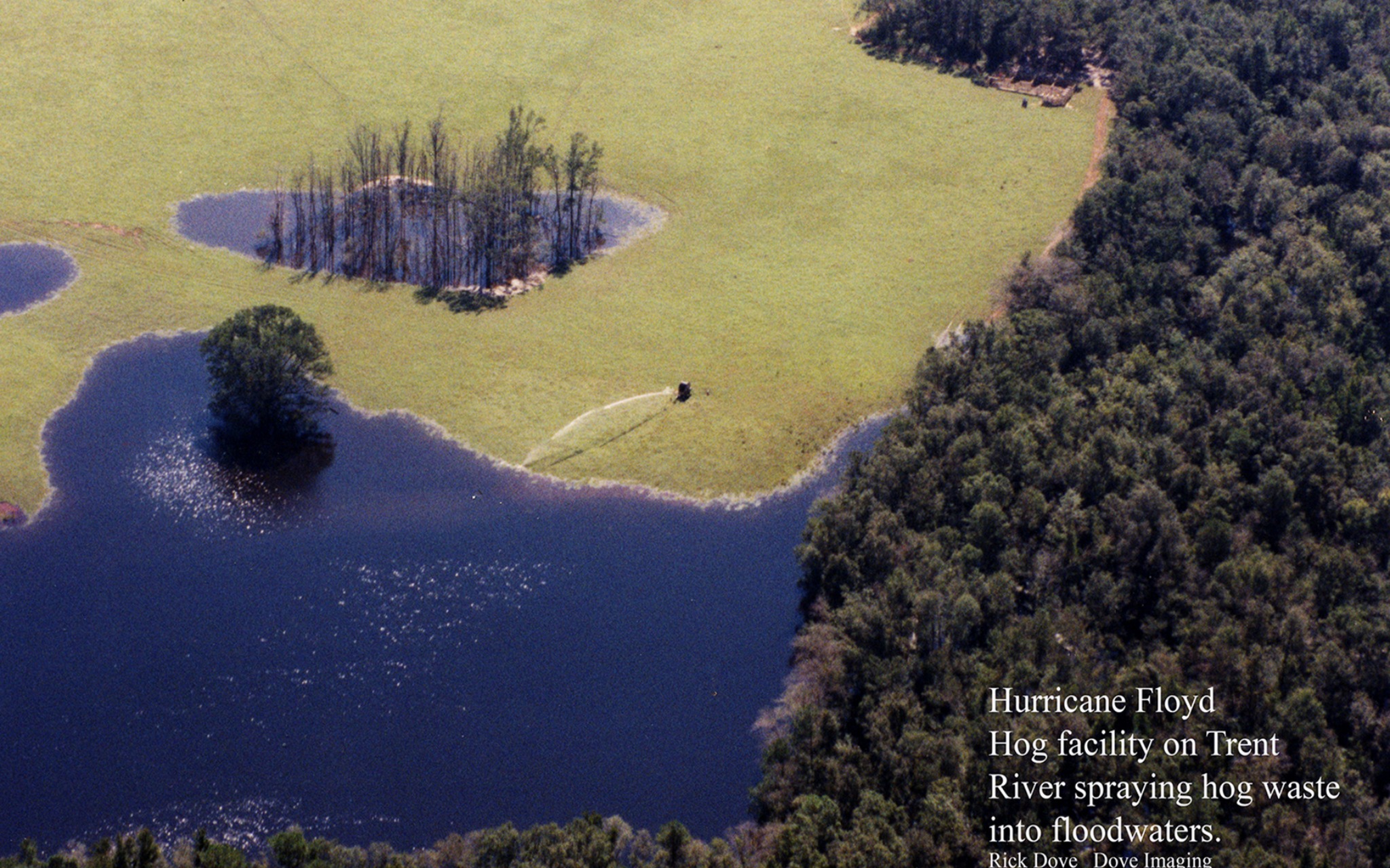
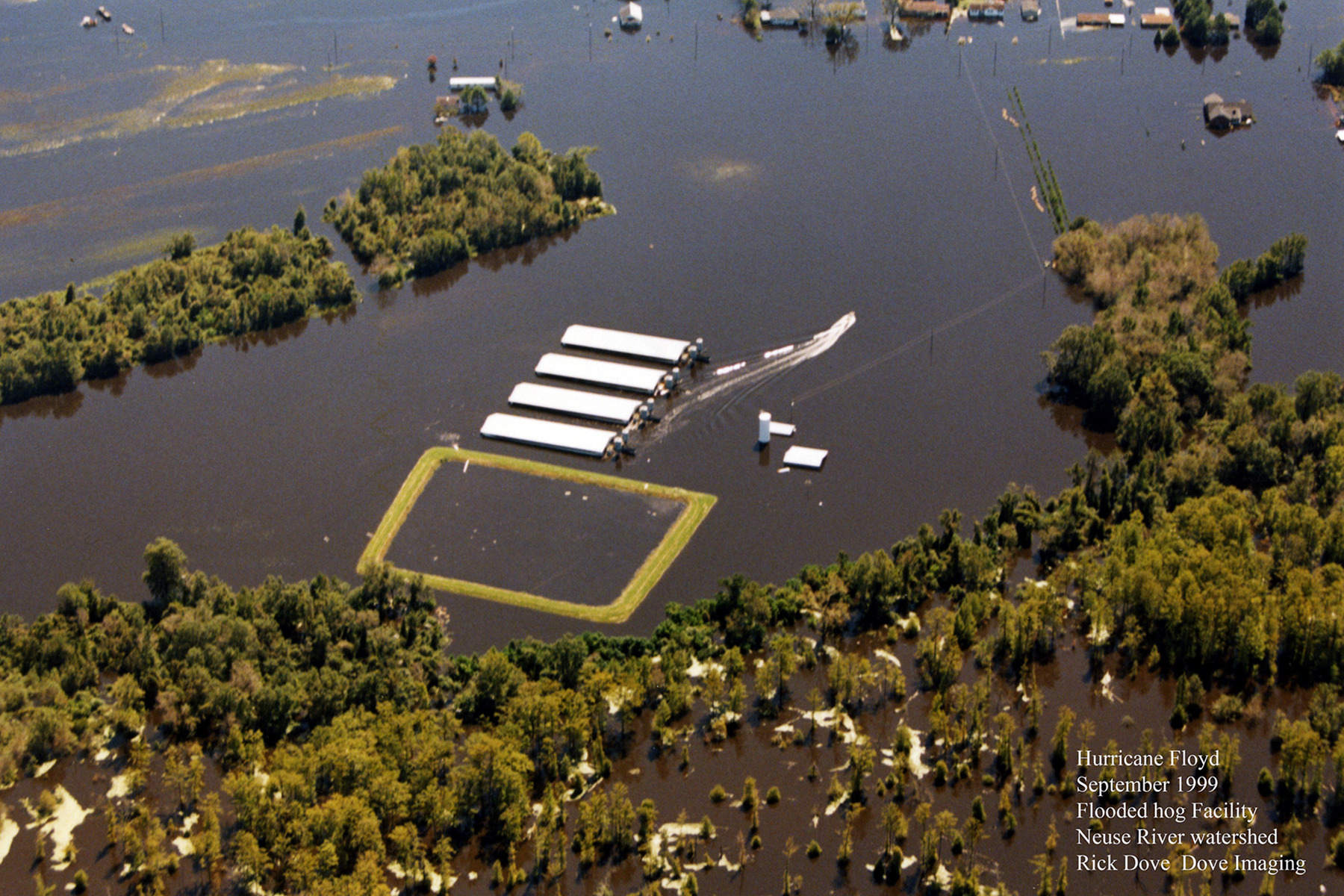

Matthew
October 2016
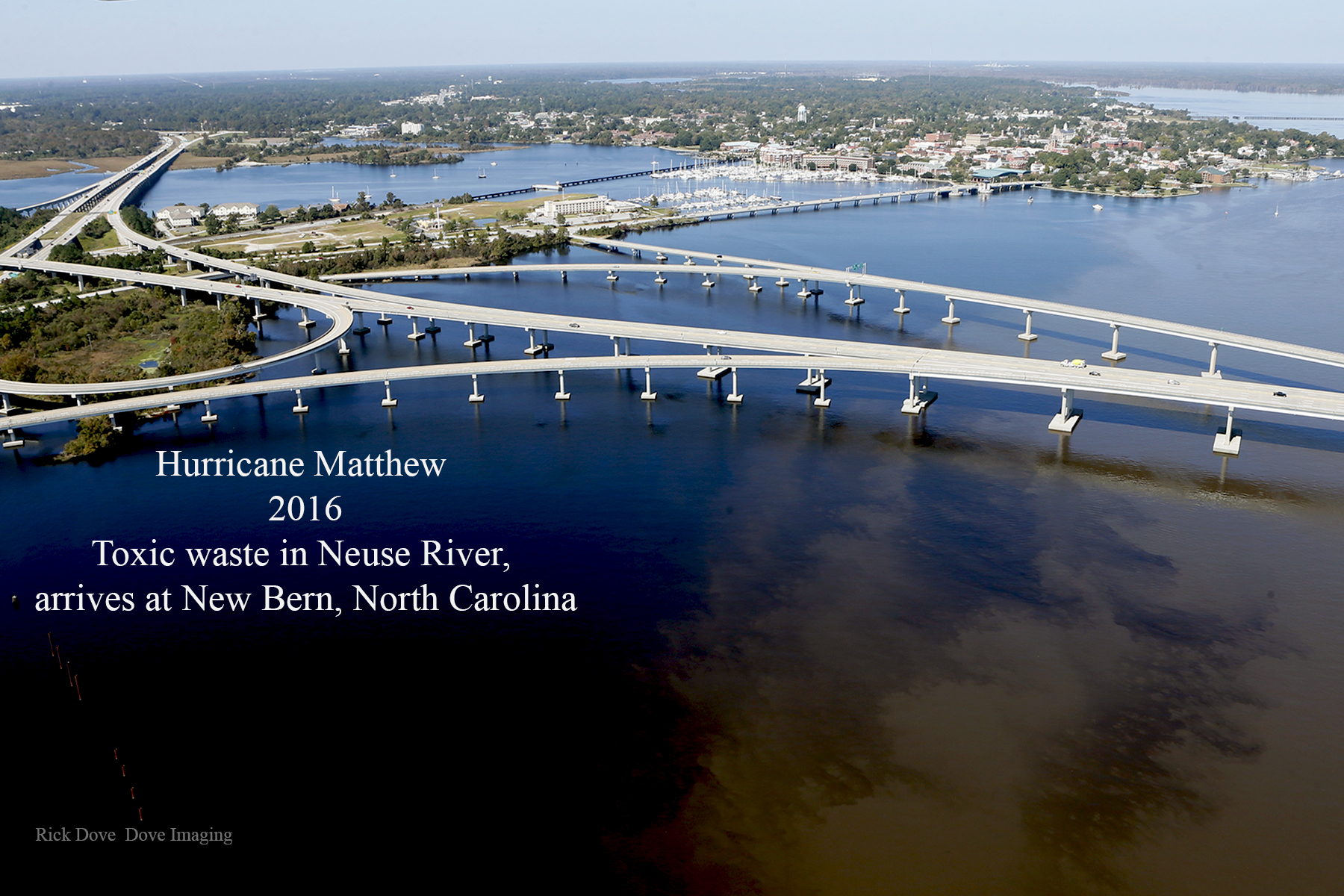
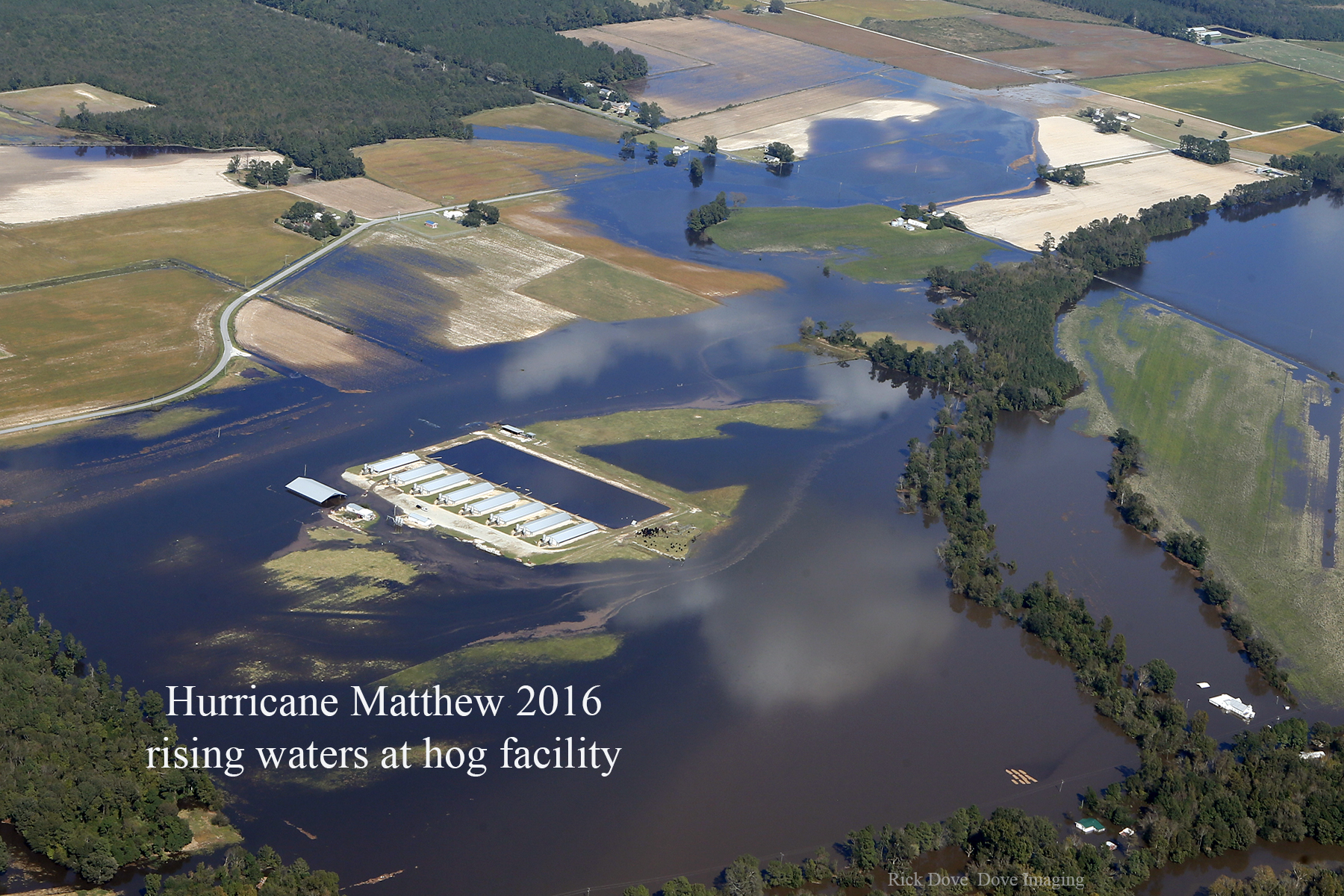
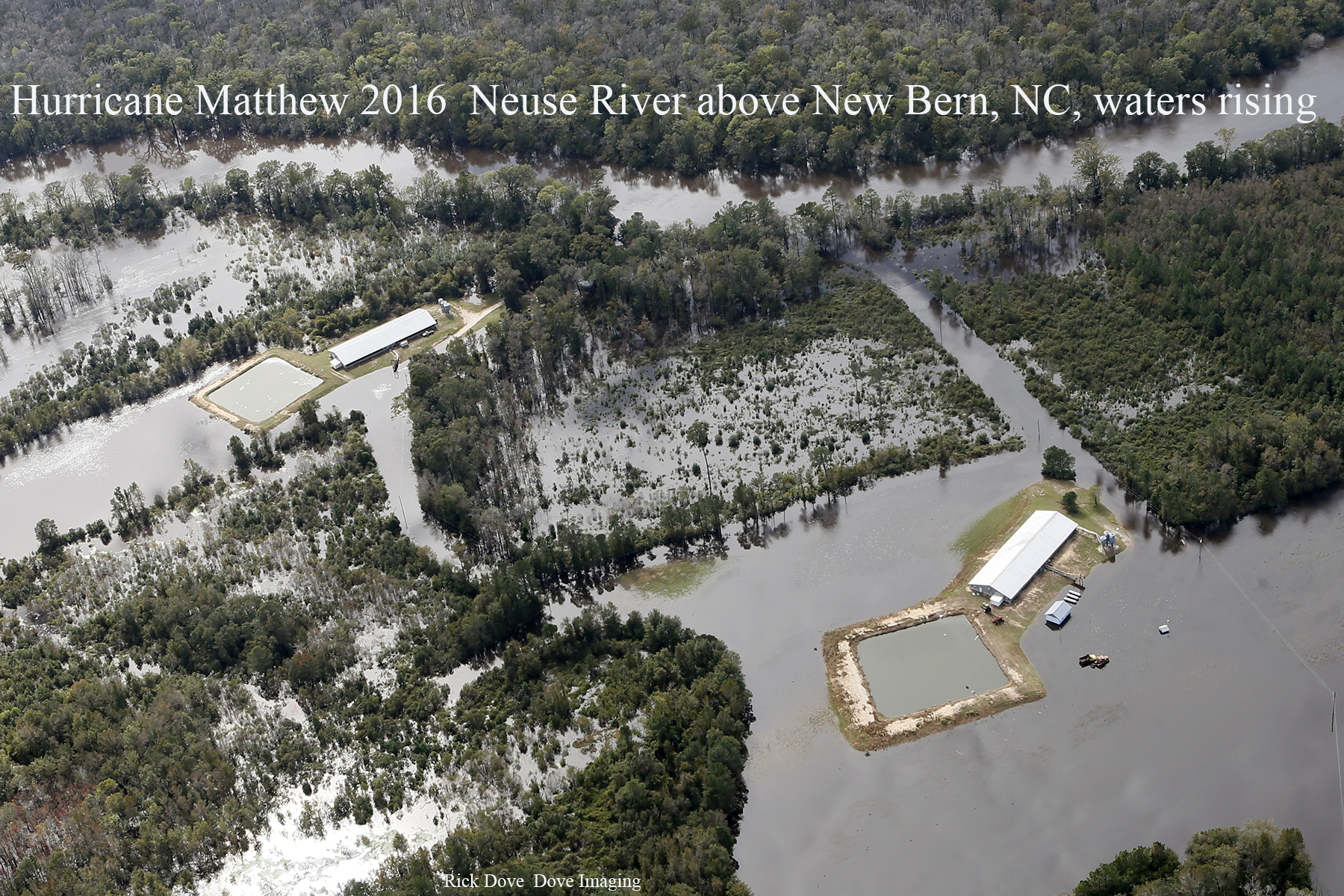
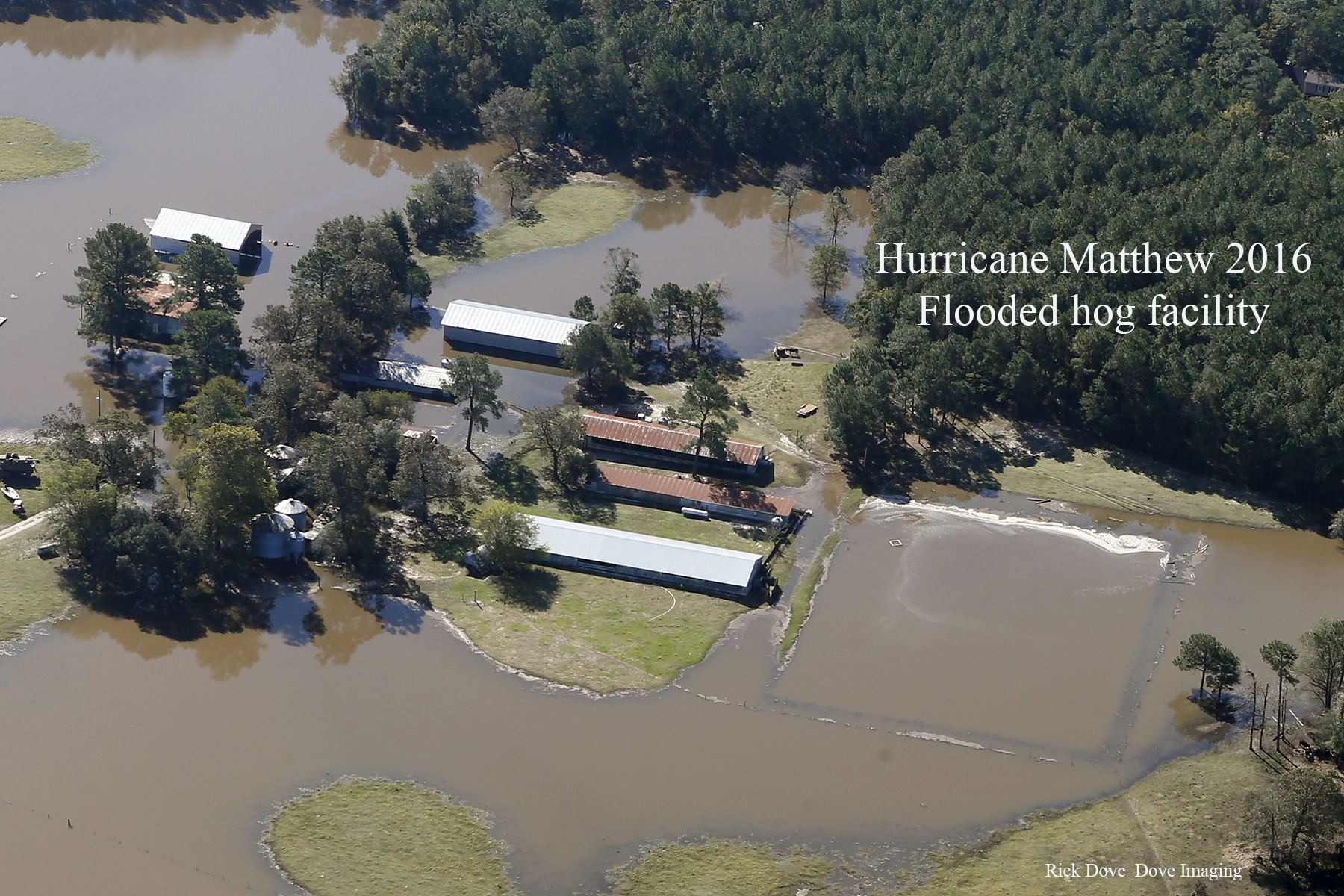
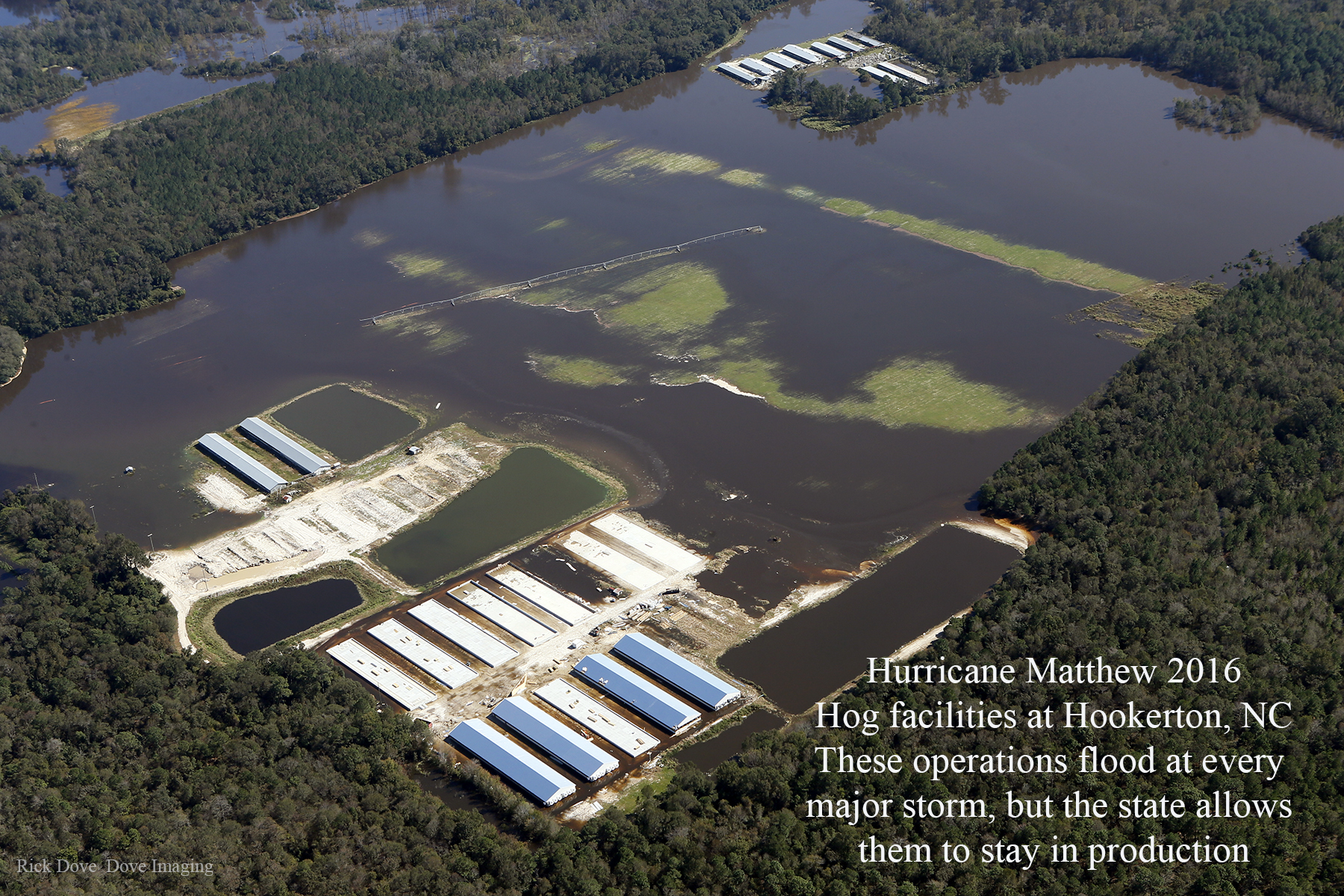
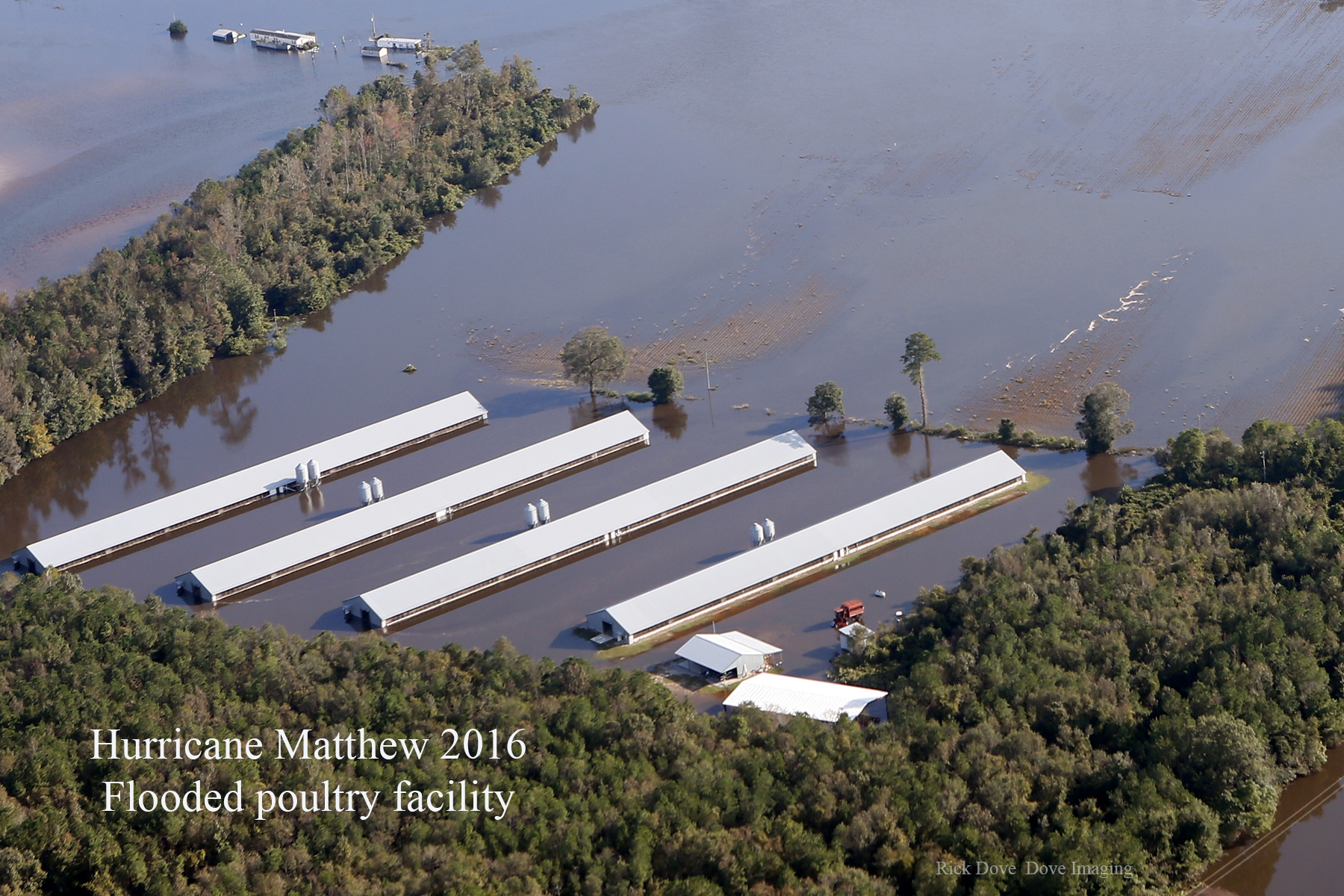
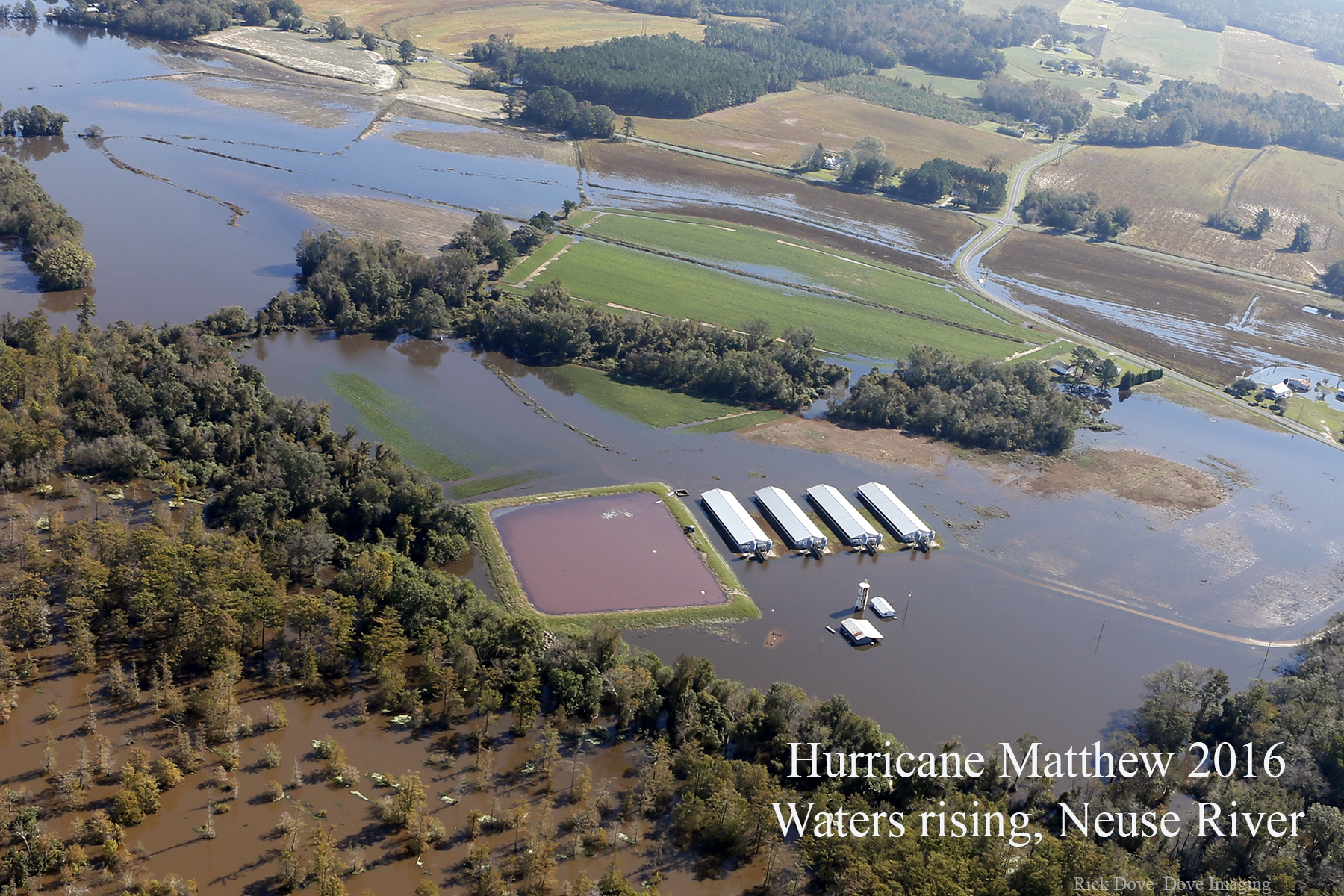
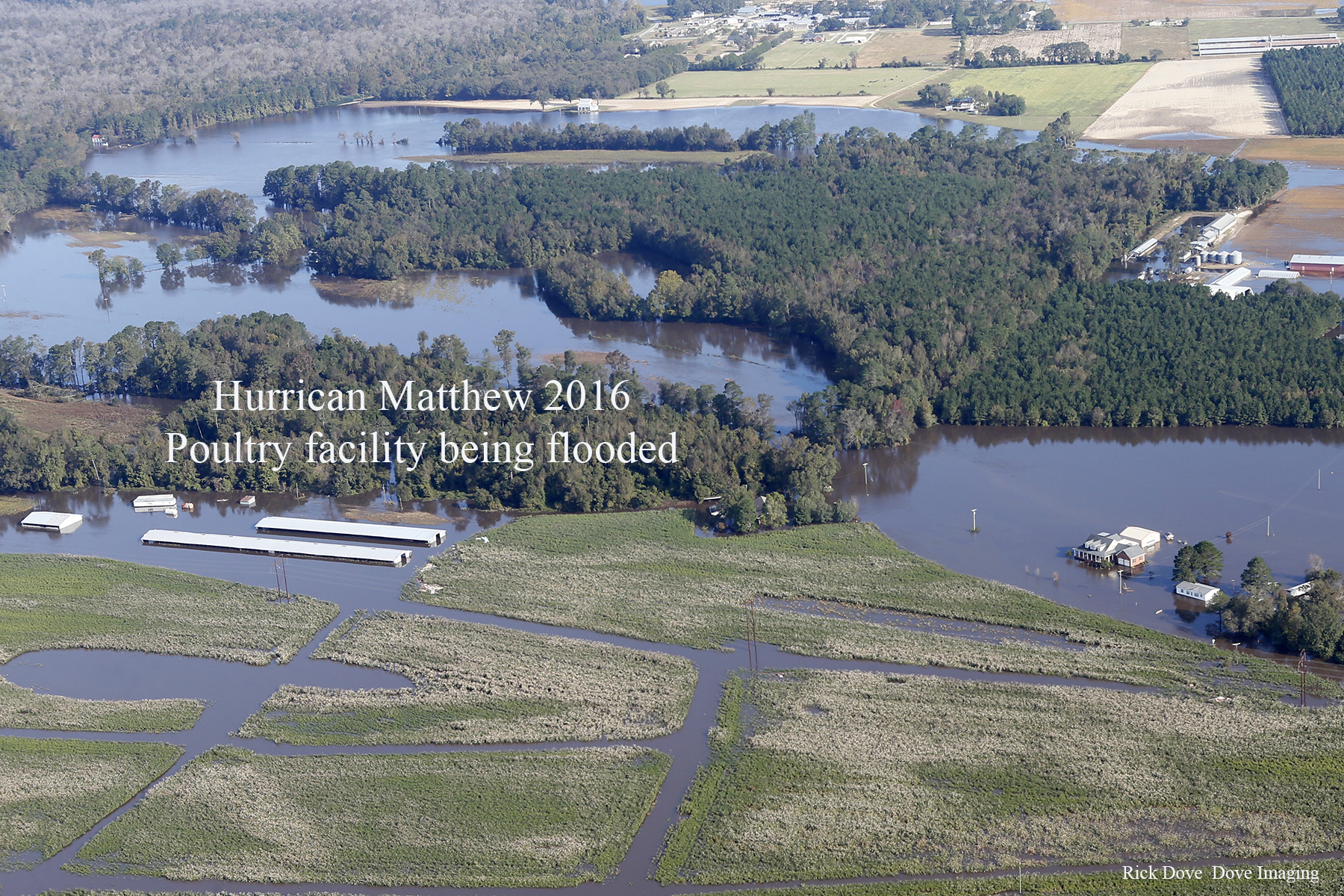
Florence
2018

Best on-the-ground hurricane coverage regarding Concentrated Animal Feeding Operations is by: Play: We Animals Video
